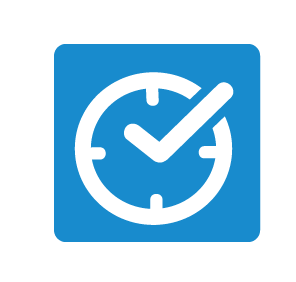Automate order to service fulfillment with Salesforce and ServiceNow integration




Let’s look at this scenario in a typical day of a salesperson who is taking the order on the phone and dispatching the service requests to the employees or the third-party contractors to fulfil service orders. We see first how this story unfolds without ServiceNow automation and then with an integration in place between Salesforce and ServiceNow using RoboMQ Hybrid Integration Platform (HIP).
Let’s meet John who is an operations specialist for Pearl Street Warehouse. He is asked by his manager to coordinate annual maintenance and safety inspection of the warehouse and conveyor belts. John had heard about “Apollo Mechanicals”, who specialize in providing electrical, mechanical, and maintenance certification to the warehouses and industrial establishments. Apollo Mechanicals has a good team of expert mechanics and they often engage licensed third-party contractors to perform quality control, safety inspection, and regulatory certifications. John calls Apollo Mechanicals for getting the annual maintenance and certification done. Steve, the customer service rep picks up the phone and takes the order for John and promises to schedule all the required activities in the next 2 weeks. Steve will get back to John with the details of the next set of activities once he has engaged the mechanics and the inspectors. As soon as Steve hangs up the phone, he looks up on a list of contractors and mechanics to identify right resources to perform jobs for John’s order for Pearl Street. Once the set of resources are identified, he calls up each one of them and informs them of the upcoming tasks at Pearl Street Warehouse. John ends up making multiple calls in order to get hold of each one of the three resources.
After John has talked to each one of them and scheduled an available slot, he sends them an email with the job details and the site location to perform the job. Steve now has Eric who is an independent contractor specializing in electric maintenance. Eric will take care of electric maintenance at Pearl Street Warehouse. Mike is a specialist with the mechanical equipment and cranes and will perform mechanical maintenance at Pearl Street. Mike is a full-time employee at Apollo Mechanicals. Henry is an independent contractor who is a certified inspector. Henry is assigned to perform safety inspection once Mike and Eric have completed mechanical and electrical maintenance. It almost took a good part of Steve’s day to just get one order lined up with all the three resources to get the job done for Pearl Street Warehouse!! He lets John at Pearl Street Warehouse know of the scheduling and calls it a day.

Figure 1: Flow of Salesforce to ServiceNow Integration
For Apollo Mechanicals, running the business this way is not scalable and many of its sales people spend most of their time scheduling and coordinating orders. They could instead be spending their time finding new leads, reaching out to them and growing the business. To solve the problem, Apollo starts using ServiceNow for incident and workforce management. It looks at integrating Salesforce, the existing Order and CRM platform, to ServiceNow so that they can automate the ordering process in Salesforce with the incident and workforce management process in ServiceNow. This integration will free up salespeople, bring operational efficiency and use time savings of the salespeople to grow their business.
Let’s now look at an alternative reality where the integration between Salesforce and ServiceNow is in place. Now, when a customer calls Apollo Mechanicals, the sales person picks up the phone and creates an order in Salesforce. While the customer is on the phone, the salesperson creates an order and attaches line items representing the services requested by the customer. Once the customer hangs up the phone, the order is ready to be automatically dispatched to the right resources and experts who will be performing the jobs. This automation magic happens behind the scene at the integration layer provided by RoboMQ.
- When an order is created in Salesforce and the items are attached to the order, RoboMQ pulls up the order and the item details in the integration flow.

Figure 2: An order is created in Salesforce and service line items are added to it
- The integration flow comprising of the Microservices or business functions, applies business rules to map each of the line items in an order to a person or a group performing the services for the creation of the incident in ServiceNow.

Figure 3: Integration layer applies mapping of line items to the resource and incident in ServiceNow
- With the identification of the person, group, or the third-party vendors performing the services, the integration layer creates an incident in ServiceNow by making an API call and assigns the tasks to the identified resources.

Figure 4: A ServiceNow incident is created by RoboMQ integration layer

